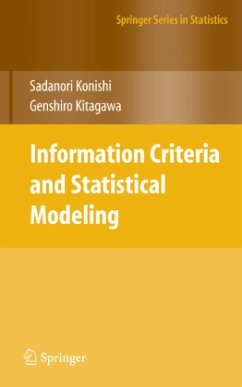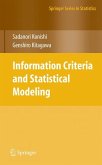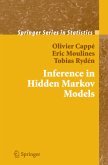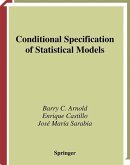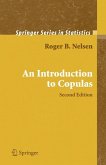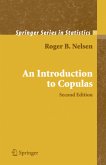Statistical modeling is a critical tool in scientific research. This book provides comprehensive explanations of the concepts and philosophy of statistical modeling, together with a wide range of practical and numerical examples. The authors expect this work to be of great value not just to statisticians but also to researchers and practitioners in various fields of research such as information science, computer science, engineering, bioinformatics, economics, marketing and environmental science. It's a crucial area of study, as statistical models are used to understand phenomena with uncertainty and to determine the structure of complex systems. They're also used to control such systems, as well as to make reliable predictions in various natural and social science fields.
The Akaike information criterion (AIC) derived as an estimator of the Kullback-Leibler information discrepancy provides a useful tool for evaluating statistical models, and numerous successful applications of the AIC have been reported in various fields of natural sciences, social sciences and engineering.
One of the main objectives of this book is to provide comprehensive explanations of the concepts and derivations of the AIC and related criteria, including Schwarz's Bayesian information criterion (BIC), together with a wide range of practical examples of model selection and evaluation criteria. A secondary objective is to provide a theoretical basis for the analysis and extension of information criteria via a statistical functional approach. A generalized information criterion (GIC) and a bootstrap information criterion are presented, which provide unified tools for modeling and model evaluation for a diverse range of models, including various types of nonlinear models and model estimation procedures such as robust estimation, the maximum penalized likelihood method and a Bayesian approach.
Hinweis: Dieser Artikel kann nur an eine deutsche Lieferadresse ausgeliefert werden.
The Akaike information criterion (AIC) derived as an estimator of the Kullback-Leibler information discrepancy provides a useful tool for evaluating statistical models, and numerous successful applications of the AIC have been reported in various fields of natural sciences, social sciences and engineering.
One of the main objectives of this book is to provide comprehensive explanations of the concepts and derivations of the AIC and related criteria, including Schwarz's Bayesian information criterion (BIC), together with a wide range of practical examples of model selection and evaluation criteria. A secondary objective is to provide a theoretical basis for the analysis and extension of information criteria via a statistical functional approach. A generalized information criterion (GIC) and a bootstrap information criterion are presented, which provide unified tools for modeling and model evaluation for a diverse range of models, including various types of nonlinear models and model estimation procedures such as robust estimation, the maximum penalized likelihood method and a Bayesian approach.
Hinweis: Dieser Artikel kann nur an eine deutsche Lieferadresse ausgeliefert werden.
From the Reviews:
"I was fully satisfied with it. The authors are obviously well-qualified to write on the subject." (Biometrics Book Reviews, 2008)
"This book explains the basic ideas of model evaluation and presents the definition and derivation of the AIC and related criteria, including BIC. ... The book makes a major contribution to the understanding of statistical modeling. Researchers interested in statistical modeling will find a lot of interesting material in it."(Erkki P. Liski, International Statistical Reviews, Vol. 76 (2), 2008)
"...Modeling is an important and challenging endeavor that permeates nearly all aspects of applied statistics. The validity of inferences, predictions, and conclusions depends on the propriety of the model serving as their basis. Any book that improves the ability of practicing statisticians and biostatisticians to formulate, select and use models is worth its weight in gold. Konishi and Kitagawa have written such a book." (Journal of the American Statistical Association September 2009, Vol. 104, No. 487, Book Reviews)
"With the main purpose of explaining the critical role of information criteria in statistical modeling, this book is written by two leading experts. ... The book ends with a list of references and an index. The style of writing is very good. Examples illustrate the concepts discussed and make the book immensely readable. ... Anybody interested in statistical modeling will love to read this book. ... it will be very useful to researchers and students interested in learning statistical modeling and model evaluation." (Ravi Sreenivasan, Zentralblatt MATH, Vol. 1172, 2009)
"I was fully satisfied with it. The authors are obviously well-qualified to write on the subject." (Biometrics Book Reviews, 2008)
"This book explains the basic ideas of model evaluation and presents the definition and derivation of the AIC and related criteria, including BIC. ... The book makes a major contribution to the understanding of statistical modeling. Researchers interested in statistical modeling will find a lot of interesting material in it."(Erkki P. Liski, International Statistical Reviews, Vol. 76 (2), 2008)
"...Modeling is an important and challenging endeavor that permeates nearly all aspects of applied statistics. The validity of inferences, predictions, and conclusions depends on the propriety of the model serving as their basis. Any book that improves the ability of practicing statisticians and biostatisticians to formulate, select and use models is worth its weight in gold. Konishi and Kitagawa have written such a book." (Journal of the American Statistical Association September 2009, Vol. 104, No. 487, Book Reviews)
"With the main purpose of explaining the critical role of information criteria in statistical modeling, this book is written by two leading experts. ... The book ends with a list of references and an index. The style of writing is very good. Examples illustrate the concepts discussed and make the book immensely readable. ... Anybody interested in statistical modeling will love to read this book. ... it will be very useful to researchers and students interested in learning statistical modeling and model evaluation." (Ravi Sreenivasan, Zentralblatt MATH, Vol. 1172, 2009)
